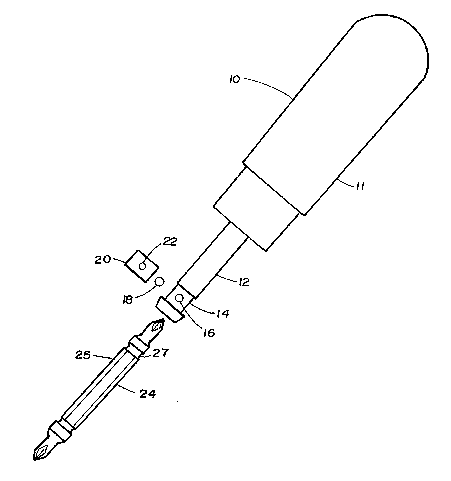Some of the information on this Web page has been provided by external sources. The Government of Canada is not responsible for the accuracy, reliability or currency of the information supplied by external sources. Users wishing to rely upon this information should consult directly with the source of the information. Content provided by external sources is not subject to official languages, privacy and accessibility requirements.
Any discrepancies in the text and image of the Claims and Abstract are due to differing posting times. Text of the Claims and Abstract are posted:
| (12) Patent Application: | (11) CA 2119347 |
|---|---|
| (54) English Title: | TOOL BIT RETAINING ASSEMBLY |
| (54) French Title: | DISPOSITIF DE RETENUE POUR OUTIL |
| Status: | Deemed Abandoned and Beyond the Period of Reinstatement - Pending Response to Notice of Disregarded Communication |
| (51) International Patent Classification (IPC): |
|
|---|---|
| (72) Inventors : |
|
| (73) Owners : |
|
| (71) Applicants : |
|
| (74) Agent: | NEXUS LAW GROUP LLP |
| (74) Associate agent: | |
| (45) Issued: | |
| (22) Filed Date: | 1994-03-17 |
| (41) Open to Public Inspection: | 1994-09-18 |
| Availability of licence: | N/A |
| Dedicated to the Public: | N/A |
| (25) Language of filing: | English |
| Patent Cooperation Treaty (PCT): | No |
|---|
| (30) Application Priority Data: | ||||||
|---|---|---|---|---|---|---|
|
ABSTRACT
A tool bit retaining assembly for a tool of a type
having a tool bit receptacle and a spring receiving region with
a hole opening into the receptacle and a tool bit insertable into
the receptacle. The tool bit has a transverse groove proximate
an insertion end thereof, and includes a ball bearing with a
diameter only slightly larger than that of the hole such that
upon being pressed against the hole the ball bearing extends
through the hole into the receptacle and engages the transverse
groove in said tool bit. A split ring spring having a split
extending from one end to the other with a portion transverse to
the axis thereof is positionable around said spring receiving
region such that the transverse portion of the split is opposite
the ball bearing. The spring also has a hole on a side opposite
the split of a diameter smaller than that of the ball bearing,
such that with the hole in the spring against the ball bearing,
the latter is pressed against the hole in the tool and engages
a tool bit groove of a tool bit positioned in the receptacle.
Note: Claims are shown in the official language in which they were submitted.
Note: Descriptions are shown in the official language in which they were submitted.

2024-08-01:As part of the Next Generation Patents (NGP) transition, the Canadian Patents Database (CPD) now contains a more detailed Event History, which replicates the Event Log of our new back-office solution.
Please note that "Inactive:" events refers to events no longer in use in our new back-office solution.
For a clearer understanding of the status of the application/patent presented on this page, the site Disclaimer , as well as the definitions for Patent , Event History , Maintenance Fee and Payment History should be consulted.
| Description | Date |
|---|---|
| Inactive: Agents merged | 2011-07-06 |
| Inactive: IPC from MCD | 2006-03-11 |
| Time Limit for Reversal Expired | 1996-09-17 |
| Application Not Reinstated by Deadline | 1996-09-17 |
| Deemed Abandoned - Failure to Respond to Maintenance Fee Notice | 1996-03-18 |
| Inactive: Adhoc Request Documented | 1996-03-18 |
| Application Published (Open to Public Inspection) | 1994-09-18 |
| Abandonment Date | Reason | Reinstatement Date |
|---|---|---|
| 1996-03-18 |
Note: Records showing the ownership history in alphabetical order.
| Current Owners on Record |
|---|
| INNO-WARE ENTERPRISES LIMITED |
| Past Owners on Record |
|---|
| LESLIE MARKWART |
| RONALD MARKWART |